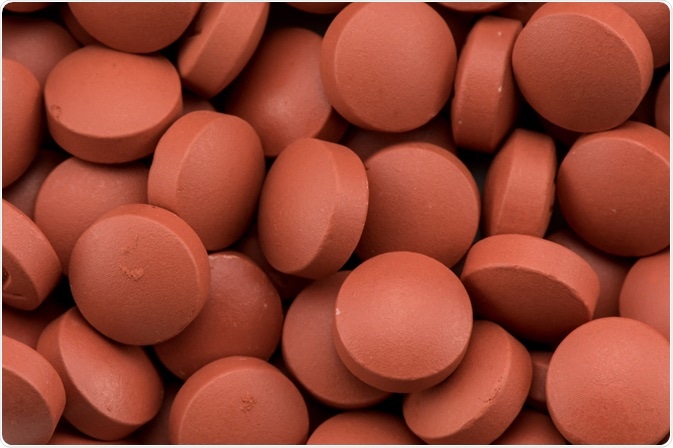Ibuprofen is a nonsteroidal anti-inflammatory drug (NSAID). Other examples of drugs in this class include aspirin and diclofenac. Taken together, these drugs are all pain relievers that are used in the management of mild to moderate pain, inflammation, and fever. These symptoms arise when the body releases chemicals called prostaglandins.
Prostaglandins are sometimes referred to as local mediators because they carry out important functions near the location in which they were produced, rather than throughout the body. In vivo studies show that the R-enantiomer is converted to the S-enantiomer, which is thought to be the more pharmacologically active enantiomer.

Image Credit: Kelly vanDellen / Shutterstock.com
Inflammation
Inflammation occurs when the body’s protective mechanisms are triggered in response to injury. The accumulation of white blood cells at the site of injury leads to pain, swelling, heat, redness, fever, and pain, which are together referred to as inflammation.
The effects of inflammation are potentially beneficial, with pain alerting a person to the problem, swelling helping to prevent movement of a joint, and increased blood flow to aid in healing. However, these effects can fail to confer a benefit in the long term. For example, pain may be ongoing long after a person is aware of the trauma. Other effects of the inflammatory process can also be too powerful and lead to more harm than good.
Mechanism of action
Ibuprofen is a non-selective inhibitor of an enzyme called cyclooxygenase (COX), which is required for the synthesis of prostaglandins via the arachidonic acid pathway. COX is needed to convert arachidonic acid to prostaglandin H2 (PGH2) in the body. PGH2 is then converted to prostaglandins. The inhibition of COX by ibuprofen, therefore, lowers the level of prostaglandins made by the body.
The prostaglandins that are formed from PGH2 are important mediators of sensations, such as pain, and inflammatory processes, such as fever and inflammation. The antipyretic effects of ibuprofen may arise as a result of its action on the hypothalamus that subsequently leads to vasodilation, an increased peripheral blood flow, and subsequent heat dissipation.
Science in 1 minute: how does ibuprofen work?
The anticoagulant effects of ibuprofen are also mediated through inhibition of COX, which converts arachidonic acid into thromboxane A2, a vital component in platelet aggregation that leads to the formation of blood clots.
There are two forms of COX in the body, which include COX-1 and COX-2. The pain and inflammation-reducing effects of NSAIDs are mediated through the inhibition of COX-2, whereas COX-1 inhibition blocks the formation of thromboxane. The long-term blockage of COX-1 with chronic use of NSAIDs, however, may cause gastric toxicity, as COX-1 usually maintains the integrity of the gastric mucosa.
Effects of ibuprofen
The initial effect of ibuprofen is a reduction in pain. The anti-inflammatory actions, however, may fail to take effect for up to two to three weeks.
As with other NSAIDs, ibuprofen is associated with unwanted side effects due to the number of other roles prostaglandins play in the body, such as protecting the gut lining and contributing to coagulation. The use of ibuprofen can irritate the gut, as well as increase the likelihood of bleeding.
However, taking the appropriate dose of ibuprofen can ensure that positive health effects, such as reduced pain, inflammation, and fever, outweigh any negative effects of the drug, such as gut irritation or bleeding. The difference in dose between the amount that causes positive health effects and the amount that causes adverse effects is referred to as the therapeutic window.
References
Further Reading
Last Updated: Dec 9, 2022